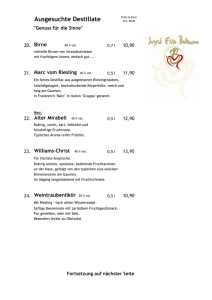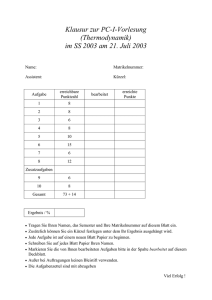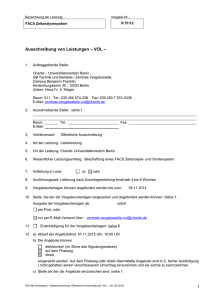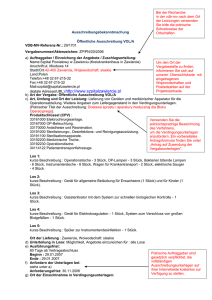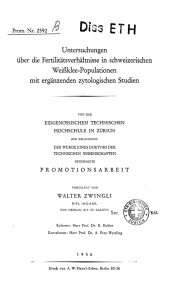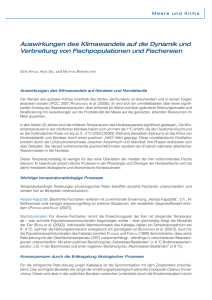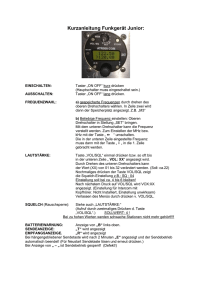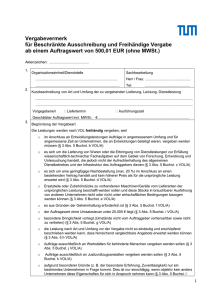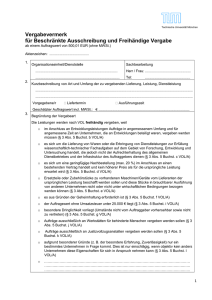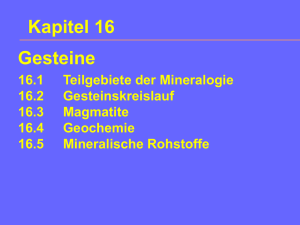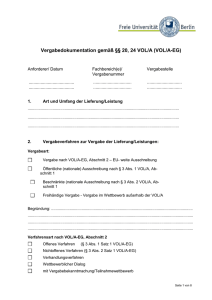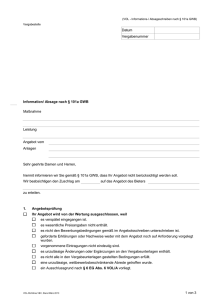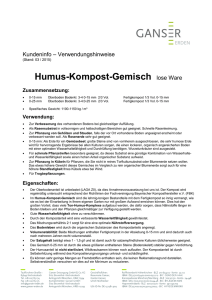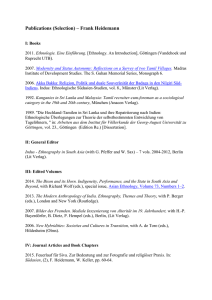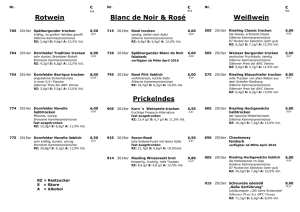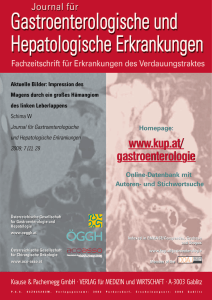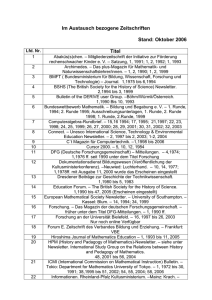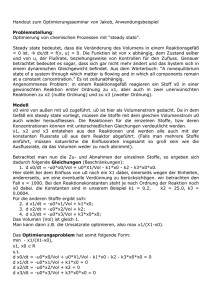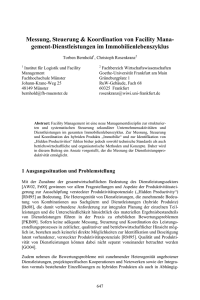deutsch - Universität Wien
Werbung
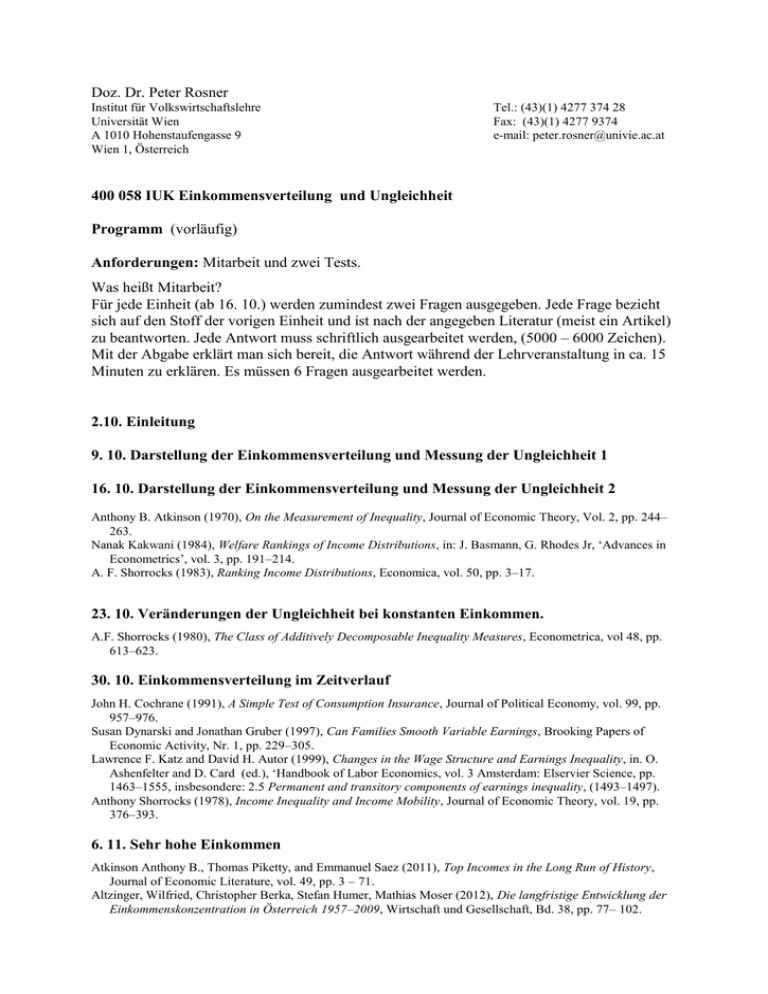
Doz. Dr. Peter Rosner Institut für Volkswirtschaftslehre Universität Wien A 1010 Hohenstaufengasse 9 Wien 1, Österreich Tel.: (43)(1) 4277 374 28 Fax: (43)(1) 4277 9374 e-mail: [email protected] 400 058 IUK Einkommensverteilung und Ungleichheit Programm (vorläufig) Anforderungen: Mitarbeit und zwei Tests. Was heißt Mitarbeit? Für jede Einheit (ab 16. 10.) werden zumindest zwei Fragen ausgegeben. Jede Frage bezieht sich auf den Stoff der vorigen Einheit und ist nach der angegeben Literatur (meist ein Artikel) zu beantworten. Jede Antwort muss schriftlich ausgearbeitet werden, (5000 – 6000 Zeichen). Mit der Abgabe erklärt man sich bereit, die Antwort während der Lehrveranstaltung in ca. 15 Minuten zu erklären. Es müssen 6 Fragen ausgearbeitet werden. 2.10. Einleitung 9. 10. Darstellung der Einkommensverteilung und Messung der Ungleichheit 1 16. 10. Darstellung der Einkommensverteilung und Messung der Ungleichheit 2 Anthony B. Atkinson (1970), On the Measurement of Inequality, Journal of Economic Theory, Vol. 2, pp. 244– 263. Nanak Kakwani (1984), Welfare Rankings of Income Distributions, in: J. Basmann, G. Rhodes Jr, ‘Advances in Econometrics’, vol. 3, pp. 191–214. A. F. Shorrocks (1983), Ranking Income Distributions, Economica, vol. 50, pp. 3–17. 23. 10. Veränderungen der Ungleichheit bei konstanten Einkommen. A.F. Shorrocks (1980), The Class of Additively Decomposable Inequality Measures, Econometrica, vol 48, pp. 613–623. 30. 10. Einkommensverteilung im Zeitverlauf John H. Cochrane (1991), A Simple Test of Consumption Insurance, Journal of Political Economy, vol. 99, pp. 957–976. Susan Dynarski and Jonathan Gruber (1997), Can Families Smooth Variable Earnings, Brooking Papers of Economic Activity, Nr. 1, pp. 229–305. Lawrence F. Katz and David H. Autor (1999), Changes in the Wage Structure and Earnings Inequality, in. O. Ashenfelter and D. Card (ed.), ‘Handbook of Labor Economics, vol. 3 Amsterdam: Elservier Science, pp. 1463–1555, insbesondere: 2.5 Permanent and transitory components of earnings inequality, (1493–1497). Anthony Shorrocks (1978), Income Inequality and Income Mobility, Journal of Economic Theory, vol. 19, pp. 376–393. 6. 11. Sehr hohe Einkommen Atkinson Anthony B., Thomas Piketty, and Emmanuel Saez (2011), Top Incomes in the Long Run of History, Journal of Economic Literature, vol. 49, pp. 3 – 71. Altzinger, Wilfried, Christopher Berka, Stefan Humer, Mathias Moser (2012), Die langfristige Entwicklung der Einkommenskonzentration in Österreich 1957–2009, Wirtschaft und Gesellschaft, Bd. 38, pp. 77– 102. 13. 11 Die weltweite Einkommensverteilung Milanovic, Branko (2002), True World Income Distribution, 1988 and 1993: First Calculation Based on Household Surveys Alone, Economic Journal, vol. 102, pp.51–92. 20. 11. Test1 27. 11. Einkommensverteilung und das Steuer-Transfersystem Michael Keen, Harry Papanago, Anthony Shorrocks (2000), Tax Reform and Progressivity, Economic Journal, vol. 110, pp. 50–68. Nanak C. Kakwani (1977), Measurement of Tax Progressivity, Economic Journal, vol. 87, pp. 71 – 80. Vincent A. Mahler and David K. Jesuit (2004), State Redistribution in Comparative Perspective: A CrossNational Analysis of the Developed Countries, Luxembourg Income Studies Working Paper Nr. 392, http://www.lisproject.org/publications/wpapersh.html 4. 12. Theoretische Erklärungen der Einkommensverteilung 1: Angebot und Nachfrage Derek Neal and Sherwin Rosen: “Theories of the distribution of earnings”, in: A. B. Atkinson and F. Bourguinon (eds.) Handbook of Income Distribution, Elsevier, 2000, pp. 380 – 427. Samuel Bowles, Herbert Gintis and Melissa Osborne (2001), The Determinants of Earnings: A Behavioral Approach, Journal of Economic Literature, vol 39, pp. 1137–1176. 11. 12. Erklärungen der Einkommensverteilung 2: Institutionelle Erklärungen Lawrence F. Katz and David H. Autor (1999), Changes in the Wage Structure and Earnings Inequality, in. O. Ashenfelter and D. Card (ed.), ‘Handbook of Labor Economics, vol. 3 Amsterdam: Elservier Science, pp. 1463–1555, insbesondere Abschnitt 6, pp. 1540–1547. Francine D. Blau and Lawrence M. Kahn (1996), International Differences in Male Wage Inequality: Institutions vs. Market Forces, Journal of Political Economy, vol. 104, pp. 791–837. Shelly J. Lundberg and Richard Startz (1983), Private Discrimination and Social Intervention in Competitive Labor Markets, American Economic Review, vol. 83, pp. 340–347. 18. 12. Veränderungen der Einkommensverteilung 1: Angebot und Nachfrage, Statistische Kriterien Claudia Goldin and Robert A. Margo (1992), The Great Compression: The Wage Structure in the United States at Mid-Century, Quarterly Journal of Economics, vol. 107, pp. 1 – 37. Lawrence F. Katz and David H. Autor (1999), Changes in the Wage Structure and Earnings Inequality, in. O. Ashenfelter and D. Card (ed.), ‘Handbook of Labor Economics, vol. 3 Amsterdam: Elservier Science, pp. 1463–1555. 8. 1. Veränderungen der Einkommensverteilung 2: Makroökonomische Erklärungen a) Außenhandel und Migration Für die Analyse des Einflusses des Außenhandels auf die Einkommensverteilung wird von der Heckscher-Olin Theorie des Außenhandels ausgegangen, insbesondere ist das Stolper-Samuelson Theorem anzuführen. Darstellungen finden sich in allen Lehrbüchern des Außenhandels. z.B. Krugman und Obstfeld, Chapter 4; Rose/Sauernheimer: Theorie der Außenwirtschaft, 13. Auflage, p. 416 – 433. (Diese Auflage ist nicht in der Bibliothek, Kopien dieses Kapitel sind bei den Unterlagen für diese LV). Spezifische Literatur: Krugman Paul (1995), Technology, Trade and Factor Prices, National Bureau of Economic Research, Working Paper 5355. Freeman, Richard (1995), Are Your Wages Set in Beijing?, The Journal of Economic Perspectives, vol. 9, nr 3, pp. 12-32. 15. 1. Veränderungen der Einkommensverteilung 3: Makroökonomische Erklärungen b) Technischer Fortschritt Daron Acemoglu (2002), Technological Change, Inequality and the Labor Market, Journal of Economic Literature, vol. 40, pp. 7–71. 12. 1. Einkommensverteilung, Wirtschaftswachstum und Entwicklung 29. 1. Test2
